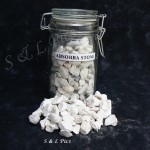Growing Media
Over a period of time various media come and go, a bit like fashion it depends really on what is the flavour of the month. Once established, growers generally develop a preference of their own for the specific types of media they like to use.
There is no firm rule that says you should use this, or that. It really comes down to personal choice, the cost and of cause portability if you are wanting to move your set-up around.
As you can imagine if you have a bad back or mobility problems and want to move your set-up it is a bit pointless growing in scoria which is very heavy, compared to perlite which is lightweight.
A few options that can be used for growing media are outlined below.
This is by no means the entire list as improvisation can always create a means; especially if one has an adequate water source like in Malaysia for example where they can grow melons using broken bricks.
Bricks
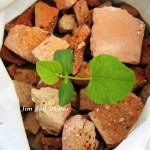 Sweet Melon grown in bricks – Malaysia
Sweet Melon grown in bricks – Malaysia
Absorbastone
Coco Core
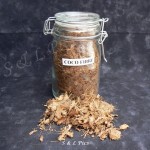 Fibre of the coconut generally sold in compressed block form. It is shredded apart and placed into a large container (60 Litre bin) and soaked with water where it expands. Do not be deceived by the size of the small block as it truly does expand out to give a large amount.
Fibre of the coconut generally sold in compressed block form. It is shredded apart and placed into a large container (60 Litre bin) and soaked with water where it expands. Do not be deceived by the size of the small block as it truly does expand out to give a large amount.
Coco Peat
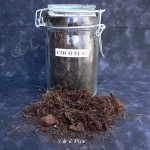 Finer than Coco Core and often used by orchid growers. It blends well with perlite. Coco Peat tends to compact more readily if too wet.
Finer than Coco Core and often used by orchid growers. It blends well with perlite. Coco Peat tends to compact more readily if too wet.
Hydroton (Clay Pebbles)
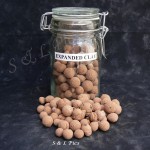 A lot of people may remember these little clay pebbles if they ever had a Luwasa system a few years ago. They make an ideal anchorage for any plant.
A lot of people may remember these little clay pebbles if they ever had a Luwasa system a few years ago. They make an ideal anchorage for any plant.
Jiffy Pellets (Pots)
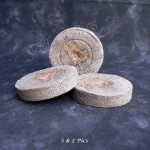 Small round discs of compressed cocoa peat, which expand to approximately 2 inches high once placed in water. These little pots and their seedling are just relocated as a whole into their new growth area with the least amount of disturbance to your newly propagated seedling.
Small round discs of compressed cocoa peat, which expand to approximately 2 inches high once placed in water. These little pots and their seedling are just relocated as a whole into their new growth area with the least amount of disturbance to your newly propagated seedling.
Perlite
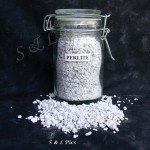 Perlite is volcanic rock, when heated to over 1000°C expands into small soft white sterile particles. Extremely lightweight with high water-retention properties it comes in varying grades. If your wanting a better water holding capacity choose a finer perlite and for a better air porosity choose a coarser perlite.
Perlite is volcanic rock, when heated to over 1000°C expands into small soft white sterile particles. Extremely lightweight with high water-retention properties it comes in varying grades. If your wanting a better water holding capacity choose a finer perlite and for a better air porosity choose a coarser perlite.
Pine Bark
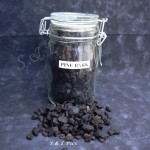 Another favourite with some orchid growers. Pine bark can be purchased in different sizes depending on requirements. It is an ideal anchorage for root systems while still allowing for air circulation.
Another favourite with some orchid growers. Pine bark can be purchased in different sizes depending on requirements. It is an ideal anchorage for root systems while still allowing for air circulation.
Pine Sawdust
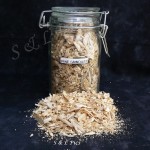 If you have access to pine sawdust, this can be a good growing medium. Please make sure it is NOT Treated Pine Sawdust though, as this can be toxic. Allow the pine sawdust to lie for a few weeks, turning over every now and then; allowing any of the pine oils that may still be present to disappear.
If you have access to pine sawdust, this can be a good growing medium. Please make sure it is NOT Treated Pine Sawdust though, as this can be toxic. Allow the pine sawdust to lie for a few weeks, turning over every now and then; allowing any of the pine oils that may still be present to disappear.
Rockwool
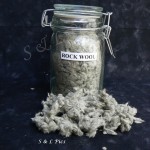 This product is made by heating a mixture of basalt rock, limestone and silica to over 1600°C. Once molten it is poured onto fast spinning wheels which throw the material out as fibres. These fibres are treated with binders and wetting agents then oven cured. The end result being compressed rigid slabs.
This product is made by heating a mixture of basalt rock, limestone and silica to over 1600°C. Once molten it is poured onto fast spinning wheels which throw the material out as fibres. These fibres are treated with binders and wetting agents then oven cured. The end result being compressed rigid slabs.
Scoria
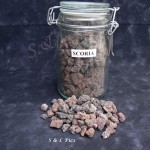 Scoria is hard red granules of volcanic origin and have a good water absorbing action. As it is relatively inexpensive and a favourite with some growers. It is heavy though, so you won’t want to be shifting your set-up around too much if you use this one. It is best washed to remove the dust before you use it.
Scoria is hard red granules of volcanic origin and have a good water absorbing action. As it is relatively inexpensive and a favourite with some growers. It is heavy though, so you won’t want to be shifting your set-up around too much if you use this one. It is best washed to remove the dust before you use it.
Vermiculite
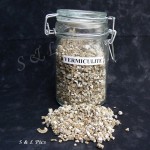 Hydrated phlogopite mica is a mineral that occurs naturally. Once the process of mining, grading and furnacing at approximately 800°C it becomes vermiculite. Vermiculte is sterile, and inert with Neutral pH providing good water absorbing capacities.
Hydrated phlogopite mica is a mineral that occurs naturally. Once the process of mining, grading and furnacing at approximately 800°C it becomes vermiculite. Vermiculte is sterile, and inert with Neutral pH providing good water absorbing capacities.
Versarock
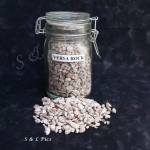 Australian versarock is made from naturally occuring kaolin clay mined at Duaringa in Central Australia. This highly absorbent lightweight mineral is then cooked to give it a significantly longer life whilst providing infection-free growing conditions. Kaolin has a smooth cooked surface and a lightweight honeycomb structure. The absorbent nature of the kaolin gives a rapid uptake of nutrient solutuion and a slow release and free draining as well as aerated growing conditions.
Australian versarock is made from naturally occuring kaolin clay mined at Duaringa in Central Australia. This highly absorbent lightweight mineral is then cooked to give it a significantly longer life whilst providing infection-free growing conditions. Kaolin has a smooth cooked surface and a lightweight honeycomb structure. The absorbent nature of the kaolin gives a rapid uptake of nutrient solutuion and a slow release and free draining as well as aerated growing conditions.
